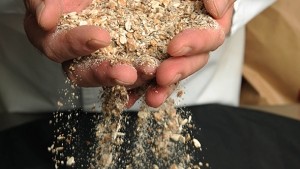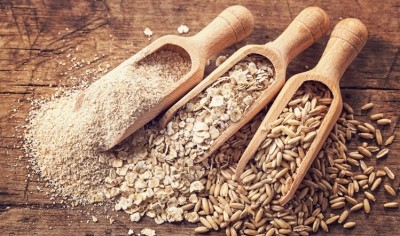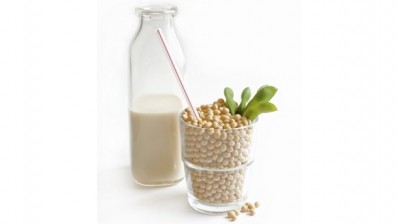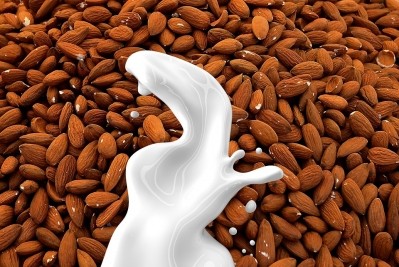Plant-based foods: land of milk and money

Key points
- The reasons behind market growth
- The health benefits of soy milk
- Other non-dairy alternatives
- Serving those with allergies
Historically the preserve of vegans and vegetarians, plant-based dairy alternatives have found a growing audience in lactose intolerance sufferers and those who wish to avoid dairy for health reasons.
“Fears over possible negative health consequences from dairy get consumers to turn to grain and nut milk products,” claimed Lianne van den Bos, senior food analyst at Euromonitor, in a 2016 Passport report.
“For some, dairy avoidance has become a mainstream lifestyle choice.”
Reflecting this claim, worldwide sales of non-dairy milk alternatives more than doubled between 2009 and 2015 to $21bn, Euromonitor says.
While the buoyant US market accounted for a large chunk of this, there is plenty of evidence to suggest that plant-derived dairy alternatives are moving into the mainstream in Europe too.
Alpro has led the way by investing heavily in new production capacity to cope with demand for its almond, hazelnut, oat and coconut milks. Unilever has launched a dairy-free extension to Flora, and the market has been further shaken up by the entrance of Rebel Kitchen and other new dairy substitute players.
So, just how far can the growth of non-dairy milk alternatives go?
The reasons behind market growth (return to top)
A report from MarketsandMarkets has predicted global consumption of dairy alternatives would grow by 15.2% every year until 2020.
Explaining the basis for health concerns around dairy consumption, Dr Sangita Bansal, senior scientist at the Indian Council of Agricultural Research – Central Institute of Post Harvest Engineering & Technology (ICAR-CIPHET) in Ludhiana, India, says: “Lactose intolerance, cholesterol content and allergenic milk proteins are the major drawbacks related to the intake of dairy products.”
In contrast, dairy alternatives are free from cholesterol, lactose sugar and hormones, she points out.
This anti-dairy, pro-plant sentiment has created a fertile breeding-ground for dairy alternatives.
The dairy industry has pushed back, campaigning to advocate milk’s health benefits – and according to Euromonitor, in 2016, flavoured milk drinks and sour milk products, such as kefir, recorded strong growth.
“Our latest data shows that both milk alternatives and dairy products can perform well and not necessarily take share from one another,” wrote van den Bos.
“It suggests consumers can be swayed either way and it’s the health proposition that sells.”
The health benefits of soy milk (return to top)
If health is the main driver of dairy alternatives, it is logical for manufacturers to understand the relative benefits of the main plant-based options and tailor their product development strategies accordingly.
“Of the main dairy alternatives, soy milk is considered superior because of its nutritional value – it is a good source of protein, vitamins A, B12 and D, potassium and isoflavones,” says Bansal.
“Soy milk contains almost as much protein as cow’s milk, yet it is lower in calories than whole milk and comparable to skim milk. It also contains very little saturated fat.”
Through its Supro soy protein isolates, DuPont Nutrition & Health is an ingredient supplier that says it can help the food industry to harness the dairy alternative opportunity.
“Soy protein isolates have been used for years as nutritional, functional and economic alternatives to dairy proteins.
“They function well in dairy-free applications like milk alternatives, frozen desserts, cultured desserts, beverages and bars,” says Garry Mendelson, applied nutrition science manager at DuPont.
“Nutritionally, soy protein isolate allows the development of dairy-free foods equivalent in protein quality to dairy-based foods and beverages.”
A neutral taste is an advantage in flavour-sensitive applications, and according to DuPont, soy protein has the blandest flavour profile of all plant proteins. There is also strong evidence to demonstrate how soy can support cardiometabolic health.
“Diets high in soy protein have been shown to reduce fat mass while preserving lean body mass during weight loss,” Mendelson explains.
“Additionally, soy protein is also associated with metabolic health through its ability to decrease abdominal fat. It also offers additional cardiometabolic advantages, including glucose management and blood cholesterol lowering.”
Other non-dairy alternatives (return to top)
Although soy remains popular, Aldo Handojo, ingredients manager at SunOpta, notes that excitement is building around other non-dairy options such as pea and oat.
“Pea has a high protein content and is allergen-free, but its flavour profile can be challenging due to earthy and beany notes, and it is an expensive commodity,” he says.
“Oat is a good source of protein and beta-glucan, can be gluten-free and has a good flavour and creaminess – but if not processed correctly, can result in a bitter flavour and gritty texture.”
Besides pea and oat, SunOpta’s ingredient portfolio includes other non-dairy beverage bases, such as almond, soy, quinoa, rice, coconut, hazelnut, cashew and sunflower.
Rice and almond milk are two of the other dairy alternative options.
“Almond milk is low in calories, contains no saturated fat and is a good source of vitamin A and D. However, it is not a good source of protein, and, unless fortified, contains no calcium,” says Bansal.
“Rice milk is the least allergenic of milk alternatives. It is very high in carbohydrates and very low in proteins so it’s the least desirable choice for people with diabetes or those who want more protein, such as athletes and the elderly,” she adds.
Peanut is one nut that, to date, hasn’t really featured in dairy substitute product development despite its attractive protein, vitamin and unsaturated fat content.
However, following the development of a peanut-based probiotic yogurt by Bansal and colleagues at ICAR-CIPHET, this could be set to change.
“I hope to see peanut-based probiotic yogurt on the supermarket shelves soon, as it is comparable to soy yoghurt in terms of nutrition and superior in terms of its sensory characteristics,” she says.
The yogurt uses a single probiotic culture of Streptococcus faecalis T 110, and no additional milk solids, gelling agents or other additives.
Serving those with allergies (return to top)
Bansal says the majority of probiotic foods available commercially are based on a dairy matrix, making them inaccessible to people who are allergic to milk proteins and lactose sugar.
The main issue was achieving a viable bacteria count. “The major challenge is the slow growth of probiotic bacteria on these substrates and maintaining their viability during storage. That is why milk solids are often used to stimulate growth,” she says.
Even when the added complication of a probiotic is taken out of the equation, developing dairy substitutes is always going to be challenging.
“For yogurt and cheese, the challenge is finding the right culture and protein-carbohydrate combination to create gel strength and the right texture,” says Handojo.
“For milk, the challenge is usually creating a creaminess, texture and flavour profile similar to dairy milk, while maintaining a nutritional profile that is comparable to dairy and non-dairy options already available.”
Danone’s recent acquisition of Alpro’s parent company American WhiteWave Foods, however, speaks volumes about the huge opportunity that exists for further developing the dairy alternative segment.
The formulation and consumer acceptance stakes may be high, but so are the potential gains.
Sprouted grains can tackle fibre deficiency
Dairy isn’t the only sector where plant-based ingredients are driving innovation.
One UK-based ingredients firm is helping to improve the nation’s health with the introduction of a ‘soft-sprouted’ wholegrain that, it claims, is easier to consume than conventional varieties.
To make WholeSoft, Edme uses the first stages of the malting process to capture the nutritional value of the wholegrains.
Raw cereal grains are steeped and germinated. Then – rather than being kilned and dried – they are pasteurised. This gives the wholegrains a “sweet, almost juicy texture that provides an appealing soft bite”, Edme says.
The launch of WholeSoft
Following the launch of WholeSoft to the bakery industry, the company is now looking to target other sectors, including ready meals, smoothies and snacks.
“Wholegrain flours and flakes – whether from wheat, barley, oats or rye, and whether malted or un-malted – are familiar in bakery, but less so in other sectors.
“Yet they, and WholeSoft sprouted grains, offer real potential to premiumise food products,” says Edme director Mike Carr.
“These wholegrain ingredients have significant levels of protein, minerals, vitamins, antioxidants and fibre.
“They are known to bring down blood pressure and reduce risk of heart disease, stroke, cancer, diabetes and obesity,” he adds.
 27-28 May 2020The Plant-based protein conference is a one-day event that will have in-depth sessions addressing current technical and operational challenges in creating plant-based meat and dairy placements Brought to you by Food Manufacture |

















